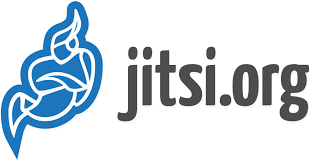

nano /etc/jitsi/meet/$(hostname -f)-config.js The outcome is now that the primary VirtualHost of your Jitsi instance would require any kind of authentication to create a conference meeting room whereas the VirtualHost for guests still grants access to anonymous users.Īfter adding the guest domain to the XMPP server component, you need to add this VirtualHost to the configuration object in the web frontend.

It does not require any DNS record or SSL certificate. Note: The domain of the guest VirtualHost is internal only. Save the file to confirm the modifications. enabled = false - Remove this line to enable this hostĪdditionally, you add a new virtual host definition at the end of the same file. Here you change the current value of authentication from anonymous to internal_hashed like so. nano /etc/prosody/conf.d/$(hostname -f).cfg.lua The reverse proxy for the Jitsi web interface will be the Nginx server.
#Jitsi meet nginx install
Open the configuration file of your domain with your preferred text editor. Before installing Jitsi Meet, install a Nginx server. The central component of Jitsi Meet is the Prosody XMPP server which is responsible for user management among other tasks, like authentication. After the room is created others will still be able to join from an anonymous domain.

Whenever a new room is about to be created Jitsi Meet will prompt for user name and password. It is possible to allow only authenticated users for creating new conference rooms. Installing Jitsi and Jibri on Same Machine Let’s have a look at the architecture of Jitsi Meet to get a better understanding.
#Jitsi meet nginx plus
Securing your instance of Jitsi Meet requires three configuration changes plus the creation of user accounts with permission to host conference calls. Please read Install Jitsi Meet on Compute Engine (GCP) in case you have not created your own instance yet. In this second article on Jitsi Meet we are going to enable authentication to avoid any misuse from public users. Meaning, that anyone knowing the URL of your server can create a new meeting room and start to have video conferences using your instance and probably causing additional cost. This local mapping of your Jitsi Meet server’s domain name to 127.0.0.1 is important because your Jitsi Meet server uses several networked processes on your server that accept local connections on the 127.0.0.1 IP address from each other. However such a default installation of Jitsi Meet is open.
#Jitsi meet nginx archive
Most important information is a fully qualified domain name (FQDN), and that’s it. before installing jitsi meet, you will need to install the nginx web server in your system where webapp is the name of container running jitsi run it docker -compose up -d the docker save flag is used to save one or more images to a tar archive docker desktop docker hub docker desktop docker hub. There are hardly any configuration changes necessary. A basic installation of Jitsi Meet gets you up and running within shortest time, probably in less than 15 minutes.


 0 kommentar(er)
0 kommentar(er)
